Hydrogen Projects and Policy Moving into the Spotlight
The second year of California’s legislative session kicked off in January and it appears hydrogen policy is rising as a key issue legislators will debate this year, in addition to concerns about energy affordability, net energy metering, and electric utility rates as the state balances efforts to accelerate the state’s nation-leading climate and renewable energy goals despite increasing concerns about energy reliability.
Hydrogen may be poised to take center stage this year
Hydrogen is just one of several energy issues where KP has its finger on the pulse. Many of our clients are engaged in promoting clean energy resources such as offshore wind, lithium production and community solar. But hydrogen may be poised to take center stage this year after a high-profile bill (AB 1550-Bennett) failed to move out of its house of origin during a key January deadline, primarily due to strong opposition from labor groups and the hydrogen industry who argued the bill would have imposed strict energy procurement requirements on hydrogen producers by embedding a complicated federal tax policy as the de facto standard for determining what’s considered “green hydrogen.” Green hydrogen is a non-toxic, non-greenhouse gas that is renewably -derived and dispatchable, which can be used as a clean fuel to power the grid whenever it is needed.
Hydrogen bills to watch
The author introduced a new bill and is aided by Assembly Speaker Robert Rivas who may have given it some life by creating a new select committee on hydrogen. Newly introduced AB 2204 (Bennett) is a “work-in-progress” but would require, after an unspecified date, that all hydrogen produced or used in California be green hydrogen that excludes the use of any fossil fuel as a feedstock or as an energy source in the production process. The committee has held two informational hearings to date and will look to advance policies to “decarbonize” the state’s hydrogen sector and tackle thorny policy issues such as determining what is “green hydrogen” for use as an energy source or a mobile fuel, particularly for heavy-duty equipment and vehicles. This is critically important to California’s ports who view hydrogen as a more flexible, reliable, and cleaner energy approach than switching immediately to electric vehicles or continuing the use of diesel which state and local agencies are seeking to ramp down. But there are differences within the hydrogen industry about the types of hydrogen they believe should be considered clean or green.
Along with Assembly Member Bennett’s efforts, several other hydrogen bills were recently introduced in the California Senate, including SB 1420 (Caballero) which would require the California Air Resources Board to adopt regulations requiring at least 33% of the retail hydrogen produced for, or dispensed by, fueling stations that receive state funds to be made from “renewable hydrogen.” It would also require that by December 31, 2030, at least 60% of the retail hydrogen produced or dispensed in California for use in transportation must be made from renewable hydrogen, and that the remainder of the retail hydrogen produced or dispensed in California for use in transportation is made from a mix of renewable hydrogen and clean hydrogen by December 31, 2045. Projects deemed as producing or using renewable hydrogen or clean hydrogen would also be granted judicial streamlining review by requiring all litigation challenges to be filed within 270 days. Two other bills that will be up for discussion include SB 1418 (Archuleta), which would require every city, county, or city and county to adopt an ordinance that creates an expedited, streamlined permitting process for hydrogen-fueling stations, and SB 993 (Becker) which would require the California Public Utilities Commission to develop a new energy pricing structure specifically for hydrogen producers and companies that decide to use hydrogen produced by electrolysis for energy intensive industrial uses. Stay tuned for more hydrogen activity in the coming months as newly introduced legislation must be in print for 30 days before hearings can start and they must pass their house of origin by May 24th to stay alive.
Funding incentives for hydrogen
Meanwhile, California’s legislative activity comes on the heels of the U.S. Department of Energy’s rollout of a multi-billion-dollar funding plan that will help states create hydrogen infrastructure using so-called “hubs” throughout the country. This program included California, which received $1 billion for the ARCHES program. At the same time, the federal government through the Department of Treasury has a simultaneous effort to provide tax credits (known as 45V) for companies who make green hydrogen, but its so-called “three pillars” criteria has complicated the policy discussion because the tax credit uses a restrictive definition that would lock out certain types of hydrogen that are not produced using electrolysis or other renewable sources (i.e. wind and solar), and requires strict incrementality, deliverability, and temporal matching to reduce greenhouse gas emissions. This means that the tax credit system thereby discourages other forms of hydrogen that may be produced from natural gas and some biomass plants. ARCHES and several California state agencies submitted a letter to the IRS arguing against the strict guidelines to receive the credits which has now spilled into a policy debate at the state level. KP client, the Los Angeles Department of Water and Power (LADWP), has been involved with the ARCHES program as the nation’s largest publicly-owned utility where it plans to build a Utah-based revolutionary green hydrogen project powered by renewable sources, which will ultimately generate 840 megawatts of green hydrogen energy by 2045. While LADWP doesn’t have positions on pending state legislation noted above, they will need flexibility to meet the Treasury’s three pillars criteria or risk not qualifying for the tax credits and savings for their ratepayers.
In other funding incentives for hydrogen, the California Energy Commission recently approved a $1.9 billion plan to expedite the rollout of statewide electric vehicle charging networks and hydrogen refueling stations with a four-year investment totaling $1 billion that will fund both battery-electric and hydrogen fuel cell truck and bus infrastructure, and another $130 million to bolster zero-emission port infrastructure.
California continues to lead the way in renewable and clean energy investments, and hydrogen projects and policy are gaining increasing attention as a critical pathway to meet the state’s aggressive climate action and pollution reduction goals.
Contact us
For questions on California policy - politics - process - or perceptions, reach out to get connected.
Hydrogen Projects and Policy insights written by Brian White, partner at KP Public Affairs. Contact:
Email: bwhite@ka-pow.com
Main: 916-448-2162
Direct: 916-498-7712


